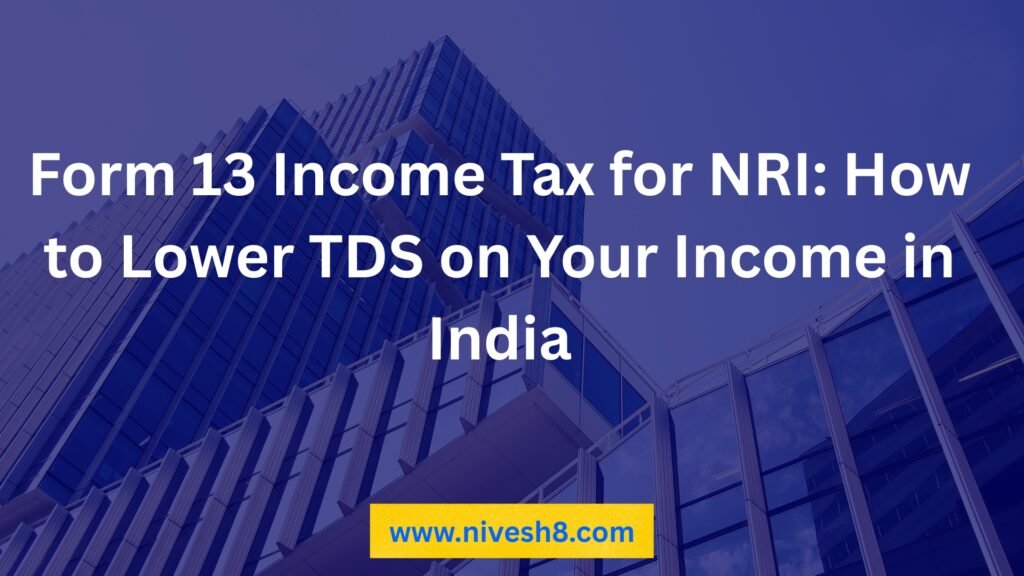Should you be a Non-Resident Indian (NRI) making income in India, you could find that your payments are reduced by a significant TDS (Tax Deducted at Source). The good news is that you may lower this by using Form 13 income tax for NRI.
Let us clarify this in plain English.
Form 13 is:
To seek reduced or nil TDS deduction on your income earned in India, Form 13 is an application you can send to the Indian Income Tax Department. This is quite helpful should your TDS rate be more than your actual tax due.
- You qualify for DTAA (Double Taxation Avoidance Agreements) advantages.
- You wish to avoid waiting for a refund following ITR filing.
Who among NRI can use Form 13 Income Tax?
- If you are an NRI making capital gains, interest, or rental income in India.
- Receiving payments from Indian renters, purchasers, or banks.
- Confronting high TDS (20%-30%) on Indian income.
Forms of Income From which NRIs Could Use Form 13:
- Rent from Indian land.
- Interest derived from an NRO account.
- Money made from selling real estate.
- Professional fees or income from consultancy.
- Dividends (should they be applicable).
Advantages of Form 13:
- Lower or zero TDS deducted.
- Improved cash flow; no waiting for a refund is necessary.
- Following Indian tax policies.
- Steers clear of over-deduction of taxes at flat rates.
File Form 13 Income Tax for NRI:
- Register using the TRACES portal (https://www.tdscpc.gov.in).
- Log in, then complete Form 13 online.
- Upload necessary records (PAN, income information, DTAA proof if necessary).
- Send for handling by your Assessing Officer.
- Should approval come about, you will receive a certificate with reduced TDS.
Papers Needed:
- PAN Card.
- Documentation proving NRI status—passport, visa, etc.
- Projected earnings and tax computation.
- Statements from banks or rental agreements.
- ITR from previous years, should one file.
Notable Points of Reference:
- Early application helps to prevent full TDS at year’s beginning.
- Approval depends on your records; it is not assured.
- Usually, a certificate good for one financial year.
- TDS will be deducted using the indicated certificate rate.
Typical Mistakes to Avoid:
- Applying with erroneous income projections.
- Lacking necessary records.
- Not including, if relevant, DTAA advantages.
- Applying too late.



